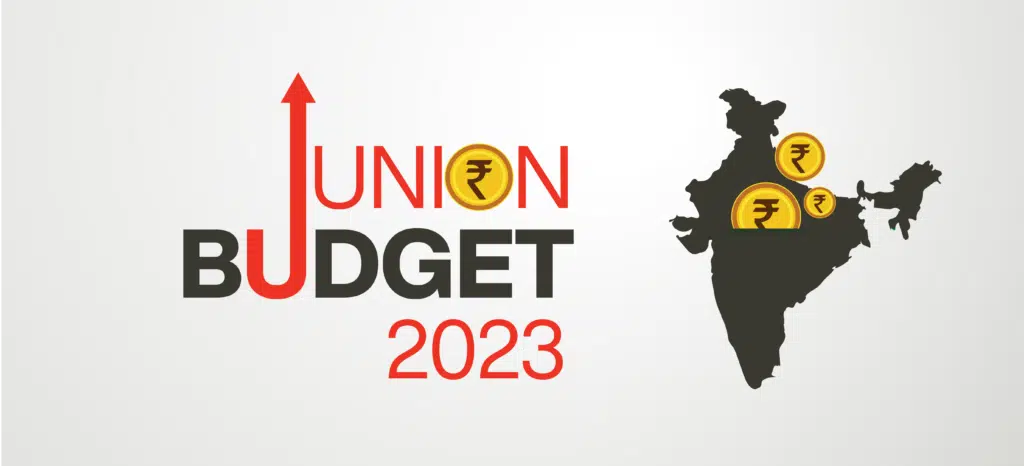The Annual Financial Statement for the financial year 2023-24 has been presented by the Financial Minister of India on February 1st. The authorization of Parliament is necessary for the Finance Ministry to carry out any kind of spending. It is the responsibility of the Budget division of the Department of Economic Affairs within the Ministry of Finance to create this yearly financial statement, which is also known as the Union Budget. It is presented each year with details of many new and existing programs that the government is running, along with the framework for revenue and spending. This article focuses on seven distinct priorities that the government has set for the upcoming fiscal year. These priorities will shape the Indian economy in the context of the global recession, and the article also discusses how the Indian economy will respond to the most terrifying danger that can befall any economy: inflation.
The Union Minister of Finance has delivered the Budget while elaborating on its aim for Amrit Kaal, which entails India celebrating 100 years of independence. It has been revealed that the central government has seven priorities, which are collectively referred to as “Saptarishi”. Let’s take a more in-depth look at the seven priorities that the government of India has set for itself, which have the potential to rescue or at the very least stabilize the economy amid a global crisis.
It is vital to keep it a technology-driven, knowledge-based economy while also maintaining the Janbhagidarri (involvement of the people of the nation), among all the seven criteria that were considered. Let’s have a look at the following list of Saptarishi in more detail:
1. Reaching the last mile: Getting to the people who need it most in the economy and spreading the advantages of various programs to as many people as possible, particularly those who are struggling the most. The PM Vishwa Karma Kaushal Samman has been included in the program, which provides a forum as well as marketing for Indian crafts. Development of the pharmaceutical industry, Jal Jeevan Mission, and North East Special infrastructure development scheme have also been taken while focusing on reaching the last mile.
2. Youth power: The power of young people has been valued, and the creation of jobs via new businesses is still a possibility. This area will emphasize new businesses in the AGRI Tech industry since India has not yet produced its country’s first unicorn in the field of agricultural start-ups. The ease of setting up a business has become the primary focus. A credit guarantee program for micro, small, and medium enterprises has been approved. The budget includes initiatives to promote natural farming and fisheries. The National Book Trust, the Children’s Book Trust, and the National Book Library are all represented here, but the Eklavaya school model is the focal point. Pradhan Mantri Kaushal Vikas Yojana 4.0 is there.
3. Financial sector: Even though the global economy is moving in the direction of recession, the Indian union budget focuses on achieving 6% to 6.8% of GDP. The urban employment rate reached its lowest point in the last four years with 7.2% in 2022-23, and it is anticipated that more controlled statistics will be recorded while simultaneously producing more prospects for work in the fiscal year 2023-24. There is a discussion of establishing a national financial information register. A portion of the budget is designated to encourage women to have modest savings through the Mahila Samman Bachat Patra. Senior folks are eligible for a variety of financial incentives.
4. Green growth: Green growth is focused on the sustainable development of the economy. At every conceivable level, environmental considerations have been given top importance. Plans that are beneficial to the environment are now being considered as a means of bolstering the economy while maintaining environmentally responsible practices. These programs include PM Pranam, Waste to Wealth plants, Mishti, and Amrit Dharohar, among others. In addition to that, there is the clean plant initiative to back up this objective. The mission to produce green hydrogen is the primary objective.
5. Unleashing the potential: Over the course of the last nine years, the economy of India has grown to become the fifth biggest economy in the world. The per capita income reaches 1.97 lakh rupees. Unleashing the unrealized potential of the Indian economy so that its size may be expanded is another significant aim that seems to be included in the budget. In the future, lab-grown diamonds will be the primary emphasis, with the end goal of reducing diamond imports and increasing diamond exports.
6. Infrastructure and investments: Schemes that target investments such as focusing on building India as a worldwide center for millet production and enhancing exports of the same, are examples of “schemes that target investments.” The Sri Anna plan was centered on the same thing. A portion of the funding will be allocated to projects that will make transportation more convenient. There is also a provision to have one hundred 5G laboratories for the development of app software.
7. Inclusive development: The budget has set goals for growth that are all-encompassing. The supply of food grain, PM Kisan, and LPG circulation are examples of programs that are addressing this goal and are among the measures that have been taken to reduce inflation. In addition to education, which accounts for 2.9% of the GDP, the health care budget is 2.1% of the GDP.
Read more: Proposal for higher education in Union Budget 2024
The formulation and dissemination of the plans show that the budget places its primary emphasis on the aforementioned seven priorities. It is a challenge for India to survive, sustain, and implement the proposed schemes when the global economy is heading toward a recession. Additionally, as responsible citizens, we should take active participation in the schemes in order to untap our true economical potential.
To understand the Union budget and its importance better, one must have sound knowledge in finance. Finance is one of the most important and in-demand sectors that offers vast employment opportunities for aspiring candidates. If you’re looking to make a career in finance, consider enhancing your domain knowledge with an online MBA with finance, BFSI, or IT and Fintech as an elective from Manipal University Jaipur. This is a UGC-entitled degree program that offers you the flexibility to learn at your convenient schedule.
Prepare for your next career milestone with us












